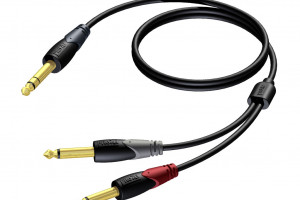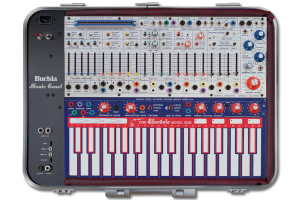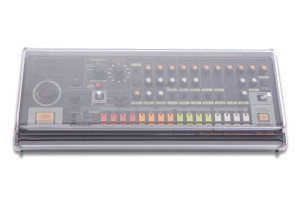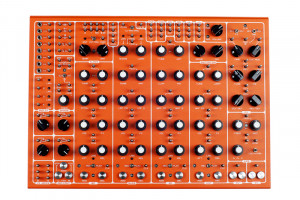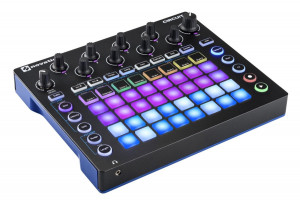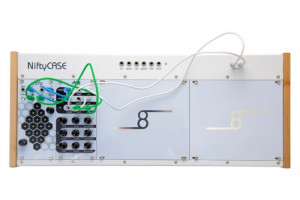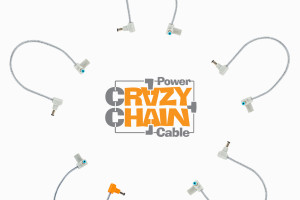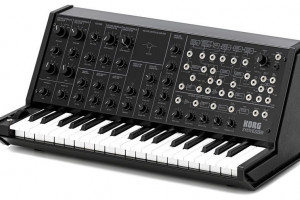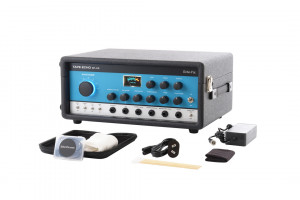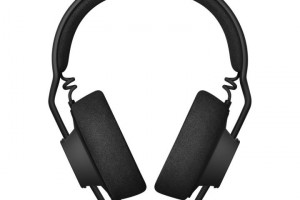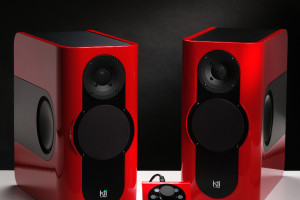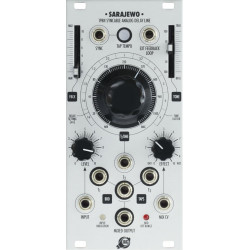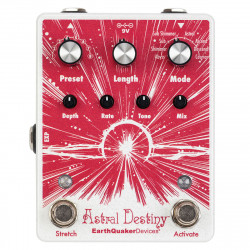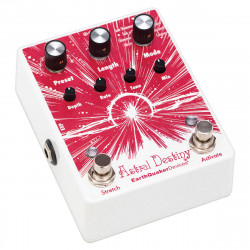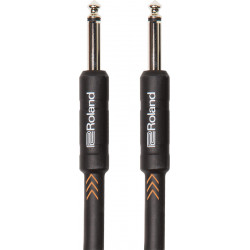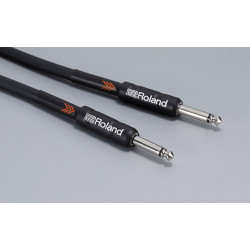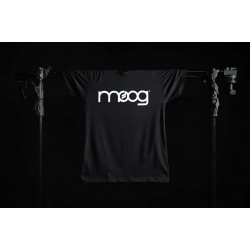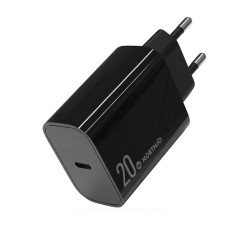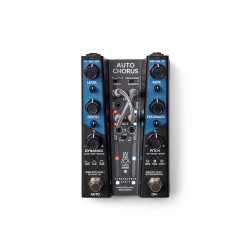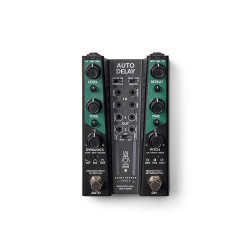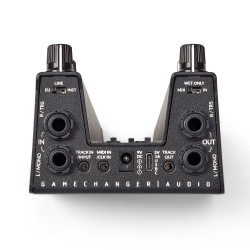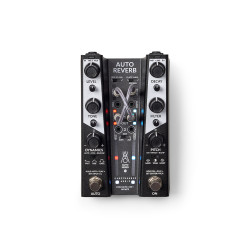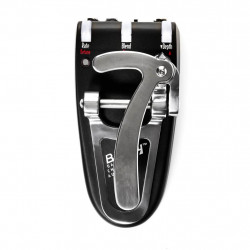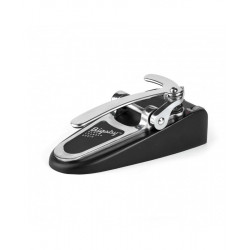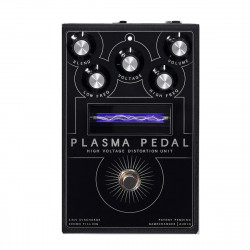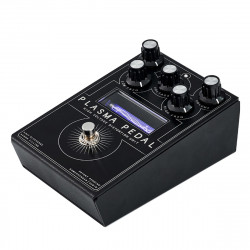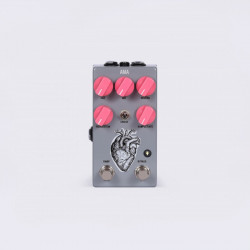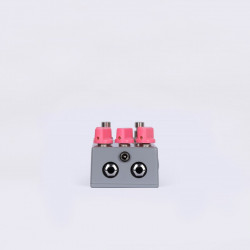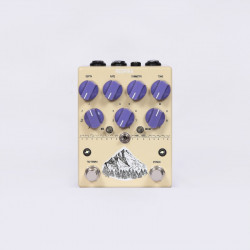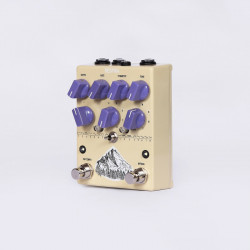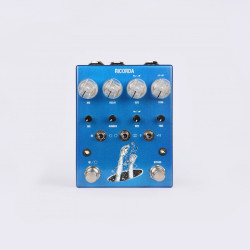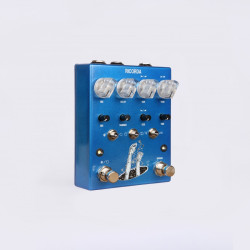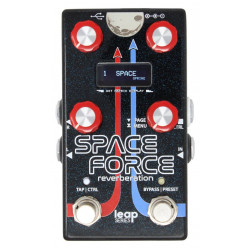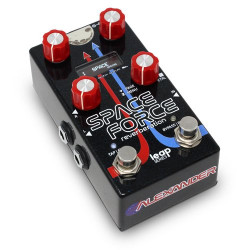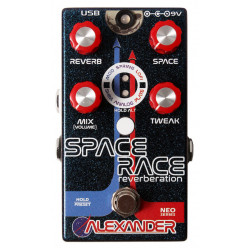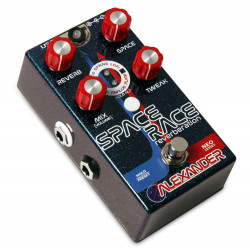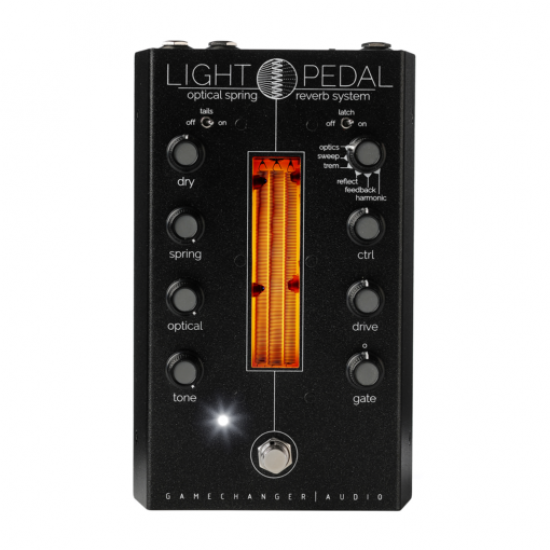
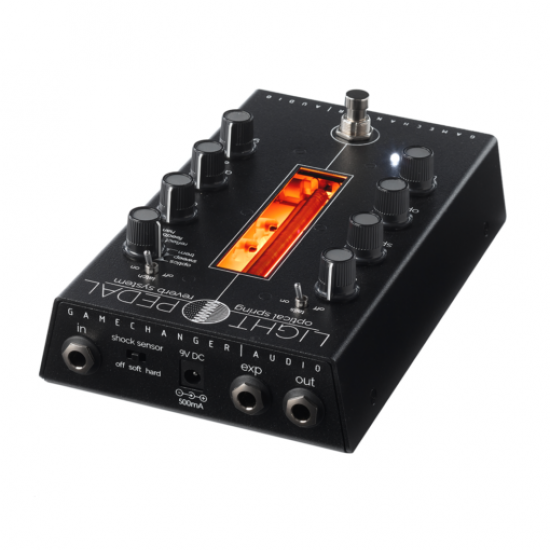
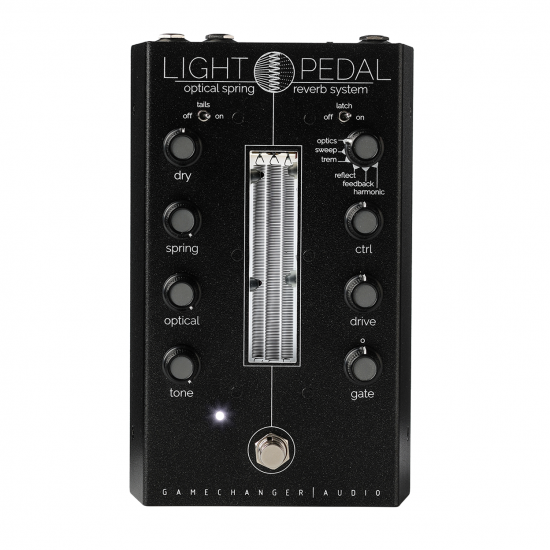
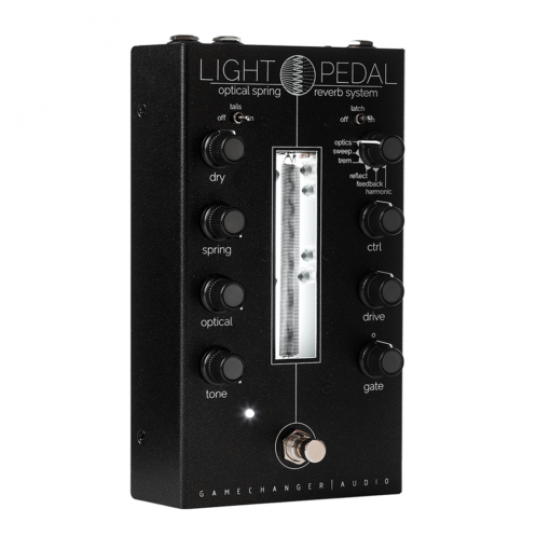
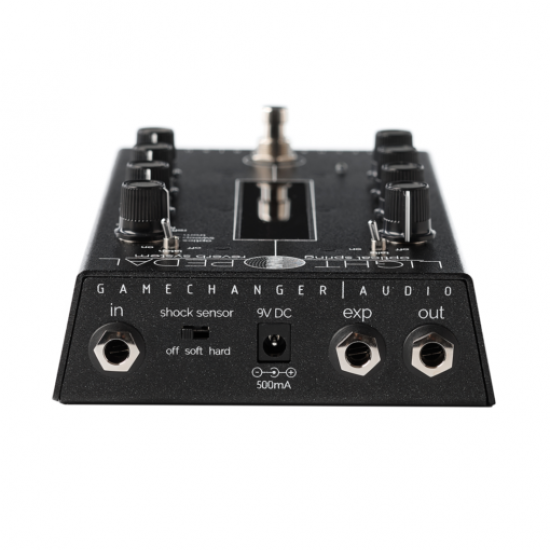





- Stock: In Stock
- Model: GAMECHANGER-LIGHT-PEDAL
More from this brand
The LIGHT Pedal is the world’s first analog optical spring reverb system that uses infra-red optical sensors. This system is used to harvest the full timbral and harmonic range of the spring reverb tank. The LIGHT Pedal combines the best features of a classic spring reverb with the innovative optical sensor system and a powerful effects section. This combination opens up countless new types of reverb textures and sounds never heard before.
The LIGHT Pedal uses extremely sensitive optical sensors directed at different points of the spring. The optical sensors detect very subtle movements on the spring’s surface as sound-waves travel through it. This method allows to pick up a much wider range of frequencies, overtones and textures otherwise lost in the mechanical reverberation process. The optical sensors also open doors to effects that are new to spring reverbs, such as tremolo, modulation, feedback and added harmonics. The result is a wide variety of reverb sounds ranging from classic to experimental to pure magic.
The LIGHT Pedal’s user interface pushes the boundaries of spring reverb even further. The extended signal mix section allows for a very precise balance between the dry, classic reverb tone and the new and optical reverb signals. The ability to stack various effects and control them with playing dynamics or an expression pedal makes this pedal an advanced tool for sonic exploration.
- Sounds ranging from classic spring tank tones to colorful optical spring reverb tones with modulation and added harmonics.
- Separate level controls for the dry signal, spring and optical reverbs. The dry signal can be attenuated and boosted.
- 6 unique effects: optics (frequency and texture calibration), sweep (modulation), tremolo, reflect (delay), feedback and harmonic (added harmonics and octave tracking). Multiple effect stacking options.
- Drive knob for adjusting the signal level sent to the reverb tank, thus affecting the reverb tank’s behavior.
- Tone knob ranges from rumbling lows to piercing highs.
- Simple one-knob envelope control produces either gated or ducking reverb.
- Effects parameters can be linked to playing dynamics.
- Switchable reverb tails in bypass mode.
- Switchable latching or momentary modes for expressive playing.
- Assignable expression pedal input.
- Adjustable shock sensor to control spring noise produced by sudden movements, mechanical impact.
- Color LEDs inside the spring tank provide helpful visual feedback for monitoring the reverb’s output and input signal levels as well as multiple effects parameters, such as modulation rate.
- High quality buffered bypass.
- Powered by a standard 9V DC center negative power supply with at least 500 mA. The power supply is not included.
THE CLASSIC SPRING TANK SOUND
The LIGHT Pedal’s central component and main sound source is a traditional spring reverb tank, consisting of three major elements – the input transducer (spring exciter), the springs and the output transducer (pickup). There can be a lot of complexity in the spring’s movement patterns during the reverberation process, especially near the input transducer. However, due to the spring elasticity, by the time vibrations have reached the output transducer we mostly hear the spring’s own resonant frequencies, which is why all spring reverbs have such a particular jangly, metallic sound. The LIGHT Pedal’s spring output (the spring knob) offers a classic high-quality spring reverb sound with the option to adjust the spring “drip” (the drive knob) and the tone of the output signal (the tone knob).
THE OPTICAL SPRING REVERB SOUND
To capture the full range of the spring’s vibrations, the LIGHT Pedal uses multiple sets of special infra-red optical sensors that act as photoelectric pickups. Each set of IR sensors is directed at a different point on the moving spring’s surface. The optical sensors detect much finer movements compared to the output transducer. This makes longer decays possible and more detailed frequency response, including subharmonics and overtones. Additionally, the pedal can achieve amazing modulation and tremolo effects by scrolling through the optical sensors or by switching them on and off (optical effects).
THE EFFECTS
- optics – lets you choose a specific combination of optical sensors, each with a slightly different texture and timbral quality.
- sweep – sweep is a modulation mode that rhythmically scrolls back and forth through the different optical sensor pairs. The different frequency response properties of each sensor result in a modulation-style effect.
- trem – a tremolo effect is produced by rhythmically switching the optical sensors on and off. The tremolo effect can also be applied to the spring output together with the optical signal or separately.
- reflect – this mode is a lo-fi delay that will send the instrument’s signal back into the reverb tank several times. Long delay times can create powerful, lengthy reverb decays.
- feedback – the feedback mode sets the spring tank into self-oscillation, which lets you produce various drones and wall-of-sound-type pads. Lots of potential uses when paired with an expression pedal or when in momentary mode.
- harmonic – in harmonic mode the spring tank is driven by a special circuit designed to produce added overtones and harmonics. Think of it as a shimmer reverb effect, but only produced naturally within the spring tank.
All of the above effects are controlled with the ctrl knob, which can be responsive to playing dynamics. The first three effects (optical, sweep, trem) can be stacked with one of the remaining three effects.
THE CONTROLS
- 3 mix controls: dry, spring (classic spring sound) and optical (optical spring reverb sound);
- tone – shared between the spring and optical sounds, and does not apply to the instruments dry signal;
- 6-way effect selector knob
- ctrl – effect parameter control knob
- drive – spring tank’s input signal level;
- gate – primary function: gated and ducking reverb control; secondary function – ctrl knob envelope response control.
- tails – turns reverb tails on or off
- latch – sets the pedal into latching mode (on) or into momentary mode (off).
- shock sensor – shuts off the wet signal output when mechanical impact or a shaking motion is detected; three levels of shock protection: off, soft and hard.
- soft footswitch – the primary function: toggling bypass; secondary functions – effects stacking, adjusting the envelope control over the effects, and entering the footswitch assignment mode.
I/O
The LIGHT Pedal is a mono pedal with a ¼’ jack input and output. The LIGHT Pedal also features an expression input for ¼’ TS and TRS jacks and is compatible with all expression pedal types, as well as CV signal (active range to +3.3 V). The expression pedal can be assigned to the ctrl, spring, optical, drive or the gate knobs.
The LIGHT Pedal uses a standard 9V DC center-negative power supply of at least 500 mA. The power supply is not included.
TECHNICAL SPECIFICATIONS
Product Dimensions WLH 105 x 190 x 40 mm (4.1 x 7.5 x 1.6 in) Product Weight 1060 g (2.3 lbs) Spring Tank 3 Springs Type, 100 mm Input Impedance 1 MΩ Max Input Level +6.8 dBu Output Impedance 100 Ω Max Output Level +6.8 dBu Peak Power Consumption 4 W Mean Power Consumption 0.9 W Power Requirements 500 mA min, 9 V DC center negative, 2.1 x 5.5 mm plug
-285x169.png)
